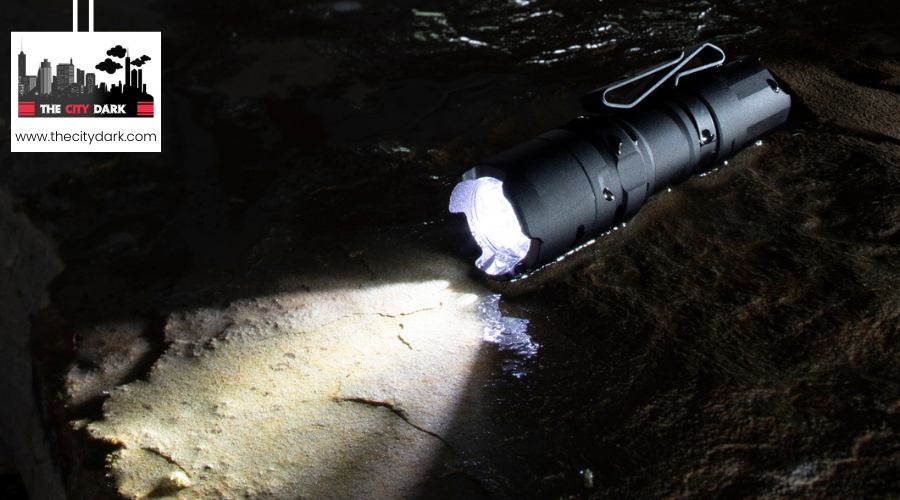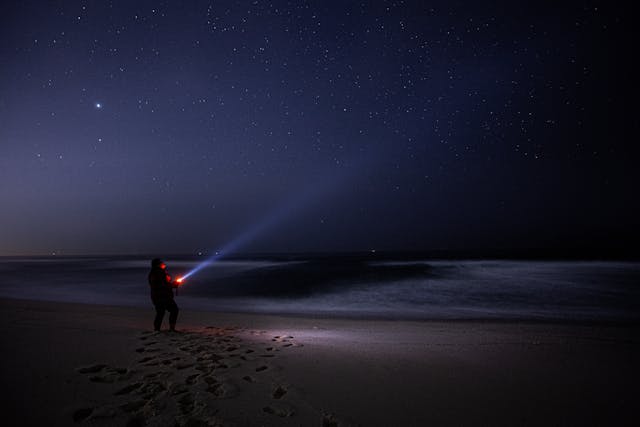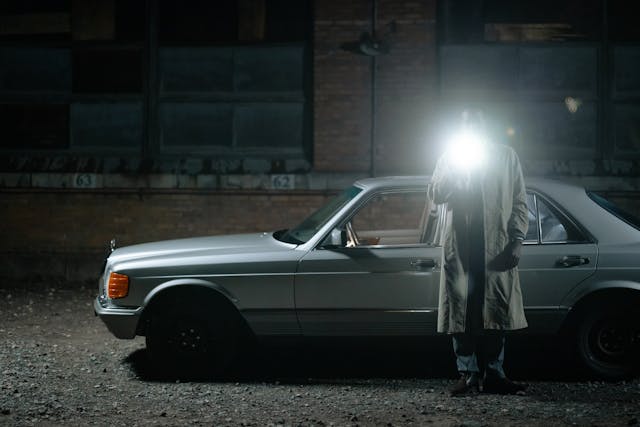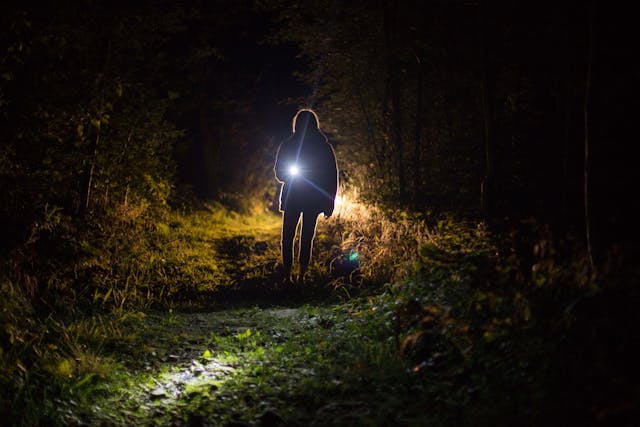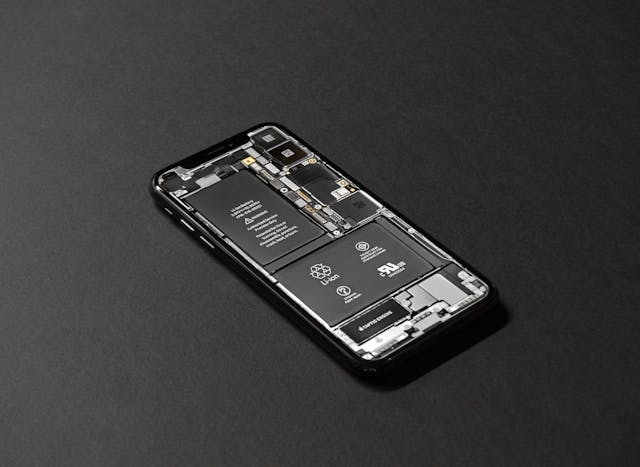It’s almost as if the moment you find yourself in pitch darkness, the importance of a flashlight becomes glaringly obvious. You’ve probably never given it much thought, but in disaster situations, that humble flashlight you’ve tucked away in your drawer can become your lifeline.
Whether it’s navigating through the unpredictable terrain of a blackout, signaling for help when you’re stranded, or simply providing a beacon of hope and comfort amidst the chaos, a flashlight’s value is immeasurable.
Yet, its utility extends far beyond illuminating your path. From disorienting potential threats to conserving your phone’s battery life for crucial communication, let’s explore how this seemingly simple tool can make a profound difference in your ability to respond, survive, and overcome when disaster strikes.
Key Takeaways
- Flashlights are crucial tools for emergency preparedness and safety, as they guide individuals out of danger and help them navigate through hazards during fires, blackouts, and rescue operations.
- Flashlights can disorient potential threats and provide time for escape, as they cause temporary night blindness and confuse attackers.
- Flashlights have practical survival uses, such as starting fires when matches or lighters are not available, which is essential for warmth, cooking, and signaling for help in survival situations.
- Flashlights offer security, comfort, and reassurance during power outages or disasters, as they provide visibility, dispel fear and panic, and offer a sense of control.
Illuminating Escape Routes
In emergencies, flashlights are your beacon, illuminating escape routes to safely guide you out of danger. When darkness envelops your surroundings due to a power outage or a natural disaster like an earthquake or flood, your flashlight becomes an indispensable tool. It’s not just a light source; it’s your lifeline, enabling you to navigate through the chaos with clarity and confidence.
Imagine you’re caught in a situation where the usual lights fail. The importance of being able to use your flashlight can’t be overstated. It helps prevent injuries by lighting up potential hazards that lie in your path, ensuring you can move swiftly and safely. Whether it’s finding the nearest exit during a fire or making your way out of a building during a blackout, your flashlight is crucial in illuminating escape routes.
Moreover, during rescue operations, the ability to signal for help or guide rescuers to your location can mean the difference between life and death. In any emergency situation, knowing how to effectively use your flashlight is key. It not only helps you see but also ensures you’re seen, facilitating a timely and safe evacuation.
Signaling for Rescue
When disaster strikes, your flashlight isn’t just for visibility; it’s a crucial tool for signaling rescue teams and ensuring you’re found quickly. By learning to signal for help effectively, you increase your chances of being rescued. A flashlight can make all the difference in low-light or nighttime conditions, allowing rescuers to see and locate you.
Utilizing your flashlight’s features, such as a strobe function, can enhance your visibility. However, even without a strobe feature, you can mimic this effect manually to catch the attention of rescuers. Here’s a quick guide to using your flashlight for signaling:
| Feature | Description | Benefit |
|---|---|---|
| Strobe Effect | Flashing light at regular intervals | Increases visibility |
| Morse Code | Series of long and short bursts | Allows for detailed communication |
| Three Short Bursts | Signal for help | Universally recognized distress signal |
| Bright Light | Natural attraction | Easily catches rescuers’ attention |
Choosing a flashlight with these capabilities is crucial. Remember, learning Morse code provides a secondary form of communication, further ensuring your message gets across. In emergencies, your flashlight isn’t just a light source; it’s your beacon of hope.
Disorienting Potential Threats
Your flashlight’s intense beam serves as a powerful deterrent, disorienting potential threats and giving you a critical advantage during dangerous encounters. When faced with a potentially hazardous situation, the ability to momentarily blind and confuse an attacker can be a lifesaver. A flashlight isn’t just a tool for illumination; it’s one of the most effective non-lethal self-defense weapons you can have.
The disorienting effects of a flashlight include:
- Causing temporary night blindness
- Confusing an attacker, allowing time for escape
These effects are amplified by:
High lumen output:
- Brightness that can disorient
- Temporarily blind an attacker
Strobe mode:
- Causes momentary disorientation
- Confusion, effectively deterring threats
Utilizing your flashlight in this manner turns it into a critical asset during encounters that could escalate into something more serious. Remember, the goal is to disorient and deter potential threats long enough for you to find safety or help. In situations where every second counts, the ability to use your flashlight to create confusion and gain the upper hand can be what stands between you and a potentially dangerous outcome.
Navigating Through Debris
When you’re caught in the chaos following a disaster, a flashlight isn’t just a tool; it’s your guide through the unpredictable. It lights up the path, helping you spot obstacles and steer clear of dangers lurking underfoot.
With its beam, you can pinpoint safe routes and sidestep hazardous materials, making it indispensable for navigating through debris.
Illuminating Obstacle Paths
Navigating through debris becomes significantly easier and safer with the aid of a flashlight, illuminating potential hazards and clearing the path ahead. This bright source of light is invaluable, particularly in dark, chaotic environments where visibility is compromised. By casting light on obstacle paths, you’re not just making your way through rubble but also identifying and avoiding potential dangers such as sharp objects that could cause injury and unstable surfaces that may collapse.
Moreover, in an emergency, your flashlight doubles as a signal device. It can help you communicate with rescuers, flashing light as an SOS signal, and illuminating your location to be seen from a distance.
A reliable flashlight enhances safety and speed, proving to be a critical tool during rescue operations in debris-laden areas.
Identifying Safe Routes
In the aftermath of a disaster, a flashlight becomes your eyes, guiding you through debris to identify safe routes efficiently. When the world is without power, the need to use a flashlight intensifies. Navigating through the remains of what was once familiar, your emergency kit is essential, with flashlights being a pivotal tool. They illuminate the path, revealing what’s safe and what’s not.
| Situation | Emotion |
|---|---|
| Power outage, total darkness | Fear, uncertainty |
| Spotting a clear path with a flashlight | Relief, hope |
| Avoiding unstable debris | Anxiety, caution |
| Identifying safe routes | Gratitude, security |
Flashlights can be used to avoid hazards and ensure you’re moving towards safety, not further into danger.
Avoiding Hazardous Materials
You’ll need a flashlight to carefully scan for sharp objects or hazardous materials hidden in the debris. Flashlights serve as a reliable source of light, enabling you to shine ahead and spot any dangerous substances or obstacles in your path. By thoroughly illuminating the area, you can avoid stepping on or touching potentially harmful materials. A durable flashlight not only helps identify hazardous materials or chemical spills but also allows you to safely navigate around them. Be cautious of unstable structures, using your flashlight to assess the stability before proceeding.
Conserve Battery Life:
- Always carry extra batteries.
- Use flashlights sparingly to ensure they remain a reliable source of light when navigating through debris.
Starting Emergency Fires
A flashlight’s ability to start a fire can be a game-changer in survival situations where traditional methods aren’t available. When you’re caught in a scenario where matches or lighters are nowhere to be found, the flashlight you’ve packed can leap from being a simple tool for illumination to a critical survival instrument.
By focusing its beam onto dry tinder, you can use the concentrated light to generate enough heat to ignite the material. This method is particularly handy when you’re under cloudy skies or in conditions where direct sunlight is a luxury you don’t have.
Having a flashlight that can provide a reliable source of heat not only broadens your survival toolkit but also ensures you’re prepared for emergencies where you need to make a fire. Whether it’s for keeping warm, cooking food, or signaling for help, the ability to start a fire with your flashlight can significantly increase your chances of survival.
Enhancing Nighttime Security
Often overlooked, flashlights are your first line of defense against the perils of darkness, ensuring safe navigation and deterring potential threats. In the cloak of night, your flashlight becomes a powerful ally, offering more than just illumination; it enhances your security in numerous ways.
Visibility is crucial in low-light conditions. With a flashlight in hand, you’re equipped to spot potential hazards or threats before they become imminent dangers. This level of preparedness can be a lifesaver, enhancing your ability to react swiftly and effectively.
The power of light can’t be understated when it comes to deterring unwelcome visitors. Flashlights serve a dual purpose:
- For Animals: A bright, sudden light can scare away nocturnal creatures, keeping them at bay.
- For Humans: In surprise attack situations, shining a bright beam directly at an assailant can disorient them, giving you a critical advantage.
Providing Comfort in Darkness
While enhancing nighttime security is crucial, flashlights also play a vital role in providing comfort during the darkest hours. When you find yourself in a power outage or facing the uncertainty of a disaster, flashlights are essential. They’re not just tools for visibility; they embody the importance of a flashlight in offering a sense of security and comfort.
Being able to see your surroundings dispels the fear and panic that darkness often brings, illuminating your space and reducing the feeling of vulnerability.
A flashlight can help you maintain a sense of control when everything else seems unpredictable. It’s a good idea to keep one within easy reach, ensuring that you can find your way, identify potential dangers, and signal for help if necessary.
More than just a source of light, a flashlight provides reassurance and a psychological boost in difficult times. It’s a beacon of hope, a reminder that you have the means to face the challenges ahead.
Facilitating Emergency Repairs
In the midst of a crisis, having a flashlight by your side can make the difference when you’re faced with the urgent need to conduct emergency repairs, ensuring you tackle the problem quickly and safely. A flashlight is an essential tool, not only illuminating your workspace but also helping you identify and assess damage or issues requiring immediate attention. Whether it’s fixing a leak, repairing electrical systems, or addressing vehicle troubles, the focused light from a flashlight is invaluable in dimly lit conditions.
- Flashlight benefits include:
- Safe and effective repairs: By providing visibility, you can safely perform necessary repairs, even in hazardous situations.
- Durability: A good flashlight is durable and can withstand the rough conditions often encountered during emergencies.
Identifying Hazards in Darkness
When you’re caught in the pitch-black aftermath of a disaster, your flashlight becomes your eyes, guiding you through perilous paths. It’s not just about seeing where you’re going; it’s about spotting what you need to avoid and finding the essential supplies to keep you safe.
With a beam of light, you can navigate obstacle-filled paths and locate the crucial resources necessary for survival.
Navigating Obstacle-Filled Paths
Navigating through darkness, a flashlight becomes your critical tool for spotting and avoiding potential hazards like uneven ground and hidden obstacles. By illuminating your path, LED flashlights, in particular, provide the visibility needed to safely move through areas filled with obstacles. Their bright, focused light can reveal dangers that darkness hides, significantly reducing the risk of accidents.
Using a flashlight can:
- Identify hazards: Spot slippery surfaces, trip hazards, or wild animals.
- Prevent accidents: Illuminate steep drops or unexpected obstructions.
Such proactive measures don’t just make navigating obstacle-filled paths easier; they can literally save your life. The ability to see and avoid what could cause temporary or severe injury is invaluable in emergency situations. Remember, being equipped with a flashlight and knowing how to use it effectively is essential for safety in the dark.
Locating Essential Supplies
Equipped with a flashlight, you’ll easily spot and access essential supplies, even in the darkest conditions, ensuring your safety during emergencies. A flashlight that’s durable becomes your beacon through the gloom, enabling you to sidestep hazards and obstacles that lurk unseen in the shadows.
Imagine trying to locate food and water without a flashlight; you’d likely miss what’s right in front of you or, worse, stumble into danger. With the focused beam of a reliable flashlight, you’ll confidently navigate to your Survival Kit, fetching necessary items like first aid supplies with ease.
It’s not just about seeing; it’s about safely locating essential supplies and securing your well-being when every second counts and light is scarce.
Conserving Phone Batteries
To conserve your phone’s battery in emergencies, consider using a separate flashlight for illumination instead of your phone’s built-in option. This simple step can significantly extend your phone’s battery life, ensuring it’s available for crucial communications.
Remember to always:
- Turn off unnecessary apps and functions
- This includes:
- Location services
- Background app refresh
- Avoid using your phone for entertainment
- Why?
- Conserving phone batteries is critical to maintain communication for extended periods.
Keeping your phone in power-saving mode is another effective strategy for battery conservation. It minimizes power consumption by limiting background data and reducing screen brightness, among other adjustments.
For situations where power sources are scarce, it’s best to be prepared with alternative charging methods:
- Carry a portable battery pack
- Invest in a solar charger
These options provide a lifeline for recharging your phone when traditional power sources are unavailable. By conserving phone batteries and being prepared with alternative charging solutions, you ensure that your line of communication remains open during critical times.
Conclusion
In conclusion, flashlights are indispensable in disaster scenarios. They light your path, signal for help, and can even disorient threats. Navigating debris becomes manageable, and you’ve got a backup for starting fires.
They’re a beacon of comfort in the dark, help with quick fixes, and let you spot dangers unseen by naked eyes. Plus, they save your phone’s battery for when you really need it.
Remember, in times of crisis, a flashlight isn’t just a tool; it’s a lifeline.

